Home & Leisure
/ArcaMax

Discover Magical Family Fun in Branson, Missouri
By Candyce H. Stapen
Sometime between the world's tallest looping coaster and The Haygoods' laser, fire and musical extravaganza, we realized that Branson, Missouri, wasn't just for retirees. It's a top place for fun and affordable family entertainment. And who isn't looking for affordability these days? Most shows and museums cost less ...Read more

Small City or Big Town, Greenville Is Worth a Visit
By Victor Block
When I first heard mention of Greenville, South Carolina, I had to look at a map to learn exactly where it is. Little did I know that it has received rave reviews from major newspapers and magazines. It didn't take long after I got there to agree with those accolades.
My first impression after arriving was the inviting ...Read more

A Visit to the Official Center of the World
By Nicola Bridges
A trip to the Official Center of the World is, well, trippy if not intriguing. But it's well worth a sidebar stop if you're cruising Interstate 8 a few miles from the California-Arizona border and bored of the vast, flat, snooze-inducing sand and scrub-strewn landscape slowly eating up the horizon miles to your ...Read more

Treat Your Traveling Feet
By Nicola Bridges
Deciding what footwear to take on your travels can be a conundrum. Ideally, it's great to pack just a couple of pairs that work for different needs and don't take up too much space in your suitcase. A perfect pair of strappy sandals or heels appropriate for evenings at your destination and flip-flops for the beach or ...Read more

Volunteer Vacations Give New Meaning to Travel
By Victor Block
Sixteen-year-old David Trone is learning to use a specially designed ax and a two-sided rake to clear foliage in a dense woodland. Nearby, Mary Beers, age 79, is patting down soil that soon will be a path for hikers and backpackers. These two are among people who volunteered to help reroute a section of a trail in the ...Read more
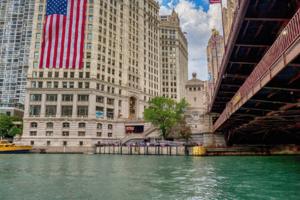
Unusual Tours Teach Local Culture With Flair
By Victor Block
The day begins with a viewing of an airline that doesn't exist. Later, visitors arrive at a dry lake bed where unidentified flying object sightings are said to occur. These are among features of a Las Vegas Area 51 Tour, one of a number of unusual excursions that are available to curious sightseers throughout the United ...Read more

Surprises Await off Washington's Major Highways
by Jim Farber
Traveling Washington state's interstate highways provides a convenient way to connect big city centers such as Seattle, Tacoma and -- in this case -- Olympia. But it's the country roads and byways radiating out from Olympia that can often provide some very surprising and memorable discoveries.
From Olympia you can easily ...Read more
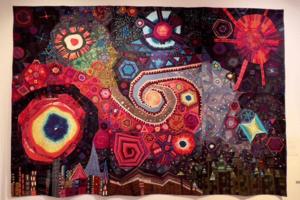
San Diego County Museums Worth a Trip
By Nicola Bridges
Beyond San Diego's world-class Balboa Park museums are a multitude more that each offer culturally immersive memories. Here are four San Diego County museum favorites just a little farther afield from downtown and off the beaten Balboa Park path.
The vibrant colors of Niraja Lorenz's wall-sized "Edge of Chaos" textile ...Read more
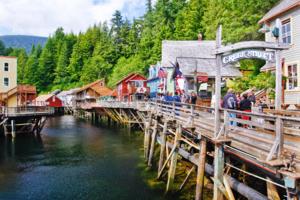
What Visitors Want, Alaska Provides
By Victor Block
When I began planning to visit Alaska, three words came to mind: "big," which describes many things in the 49th state; scenery, some of the most magnificent anywhere; and "wildlife," which is there in abundance.
It didn't take long to experience all of those observations. Alaska is big. It's twice as large as Texas, with...Read more

Wildlife, Wild Scenery and Wild Stories in Denali
By Fyllis Hockman
Forty pairs of eyes scanned the countryside looking for movement, any movement. With binoculars and cameras at the ready, we hoped for a bear or a moose but were willing to settle for some Dall sheep high up the mountain. Not a passenger aboard the bus maintained a semblance of composure. We scurried like kids from one ...Read more
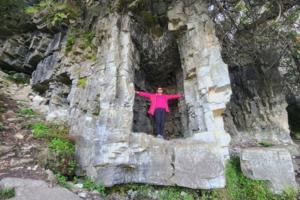
Come and Visit Delightful Door County, Wisconsin
By Doug Hansen
Cherry pie, cherry pancakes and cherry pastries galore. Lavender fields with 30,000 plants. Twenty-four county and state parks with endless miles of hiking trails, 53 swimming beaches with pristine water, 11 golf courses and nine wineries.
Welcome to Door County, Wisconsin, one of the state's most popular tourist ...Read more

Theme Parks Lure With Summer Fun
By Victor Block
In 1829, a Pennsylvania man named Henry Knoebel bought a small wooded area that he used for farming. Decades later, when roadside attractions were becoming popular, a creek-fed swimming hole and picnic area were added, and visitors could purchase snacks, ice cream and soft drinks.
Over time, this evolved into the ...Read more

Beckoned to Vanua Levu Island by Bures and Bulas
By Margot Black
Welcome to Fiji, an archipelago splashed across the South Pacific, teeming with culture, history and a siren call to travelers yearning for adventure and serenity. Fiji's white sandy beaches and abundant natural splendor have long beckoned vacationers from around the globe. And we, a family bitten by wanderlust, eagerly ...Read more

A Family Finds Nature's Paradise in Fiji
By Margot Black
Floating in the heart of the South Pacific, Fiji has cultivated its well-earned reputation as a slice of heaven. With a tapestry woven from its rich history and vibrant culture, Fiji epitomizes the kind of place from which postcards come, promising families an escape to its welcoming waters and beautiful beaches where ...Read more

Bulgaria Is the Answer for a Unique Destination
By Robert Selwitz
If you're seeking a place that's safe, uncrowded, intriguing and affordable, then Bulgaria should definitely be a possibility. Bordered by Romania, Serbia, North Macedonia, Greece and Turkey, Bulgaria blends millennia of colorful history with what is today a nation rebounding from decades of suffocating Cold War ...Read more
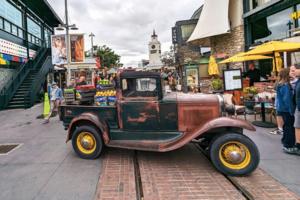
Historic Marketplaces Bring Food and People Together
By Athena Lucero
If you're a foodie, gourmet, gourmand or just hungry, satisfying your tastebuds in Los Angeles is a main event. In a recent ranking by U.S. World and News Report, ethnically diverse LA shares the spotlight as one of the top four best food cities in the United States alongside New Orleans, New York City and Chicago. ...Read more

Sports, Rivers and Bridges Bring Downtown Pittsburgh to Life
By Marci DeWolf
Bridges are a great city's great connectors, and Pittsburgh is experiencing a River Renaissance, affirming an identity drawn from its famous bridges and rivers. These iconic structures connect the land mass to the downtown and riverfront.
The city's three Sister Bridges are a strategic way of connecting people. They ...Read more

Long Flight? Healthy Snacks You Can Carry On
By Nicola Bridges
In-flight peanuts and pretzels are often the only food available on flights today, and airport food picked up for the plane ride can be heavy and loaded with calories. Instead, pack nutritious healthy snacks in your carry-on that will quell your cravings without weighing you down. Pack extras and you'll have light bites...Read more

Natives and Nature Make up Much of Broward County's Appeal
By Victor Block
Some visitors are speeding through winding waterways in an airboat, keeping their eyes peeled for alligators, colorful birds and other resident creatures. Others are soaking up the sun and diving into the surf at lovely white-sand beaches that front the Atlantic Ocean.
Welcome to Broward County, Florida, which is tucked ...Read more

Margaritaville Resort: A Memorial to Jimmy Buffett
By Fyllis Hockman
Most people know of -- and many people live by -- the aphorism "It's 5 o'clock somewhere," but during my recent trip to Hollywood, Florida, it took on an even more special meaning. When Jimmy Buffett passed in September 2023, he left behind a beloved legacy of famous songs. Such is true of many well-known musicians, but...Read more






